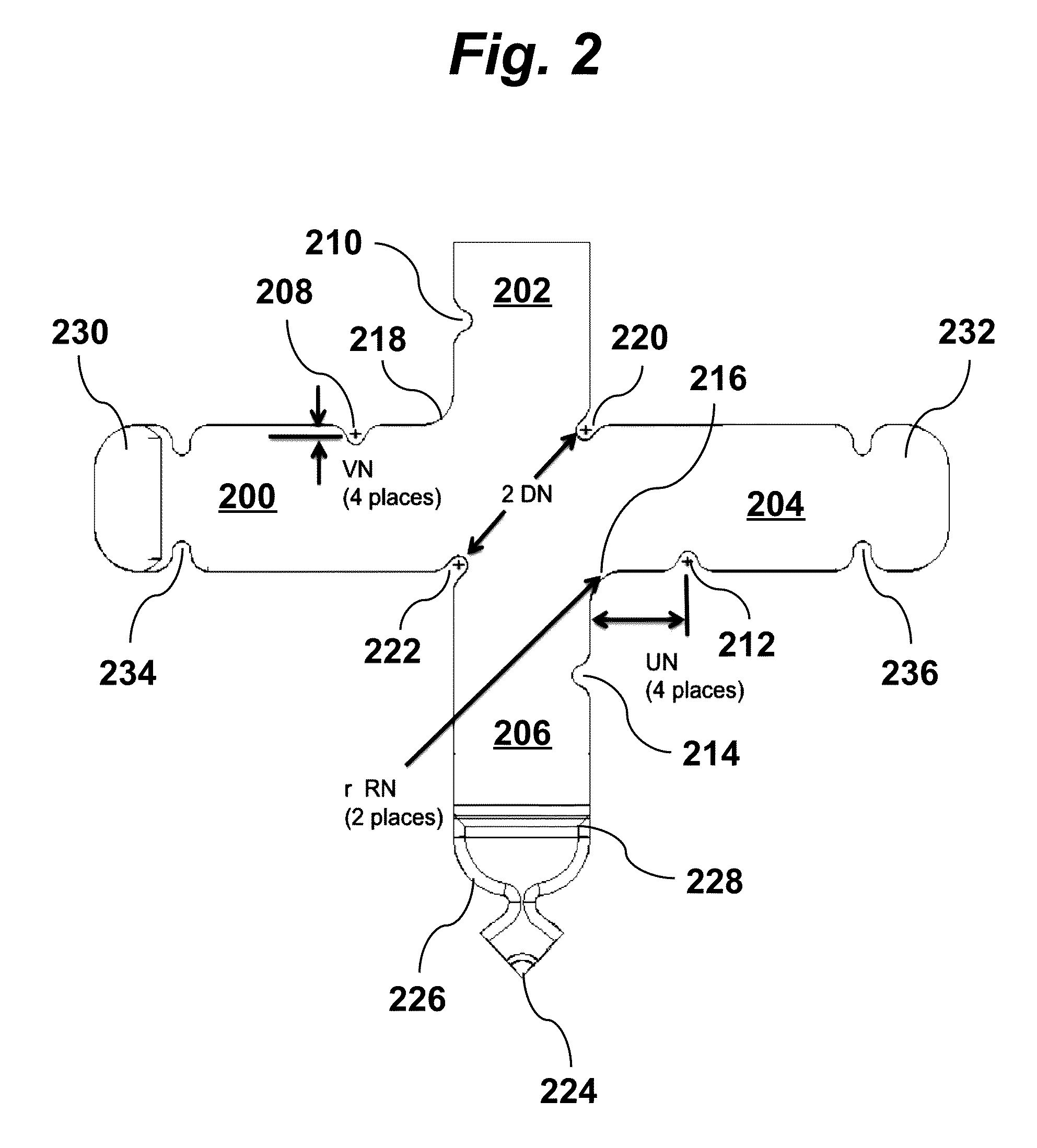Distributed coupling high efficiency linear accelerator
a linear accelerator and distributed coupling technology, applied in the field of linear accelerators, can solve the problems of no practical implementation that allows such topology to exist, no idea of feeding each cavity, and previously thought impractical, and achieve the effects of reducing structure volume and complexity, simple realization, and high efficiency
- Summary
- Abstract
- Description
- Claims
- Application Information
AI Technical Summary
Benefits of technology
Problems solved by technology
Method used
Image
Examples
Embodiment Construction
[0022]FIG. 1 is an illustration of a monolithic metallic linac cell plate according to an embodiment of the invention. A microwave circuit for a linear accelerator may be formed by stacking multiple such cell plates upon each other. The cell has four cross-shaped directional couplers 100, 102, 104, 106 symmetrically oriented around an acceleration cavity 108 that is aligned with a vertical beam axis of the linear accelerator. Each directional coupler 100, 102, 104, 106 has coupling arms. For example, coupler 104 has arms 110 and 112. Each coupling arm has an in-plane width less than an operational wavelength of the linear accelerator. Each of the cell plates has one or more coupling slots, such as slot 114, that couples one of the directional couplers in the cell to an adjacent directional coupler of an adjacent cell. Each of the cell plates also has one or more coupling slots, such as slot 116, that couples the directional coupler to the central acceleration cavity 108. The cell pl...
PUM
 Login to View More
Login to View More Abstract
Description
Claims
Application Information
 Login to View More
Login to View More - R&D
- Intellectual Property
- Life Sciences
- Materials
- Tech Scout
- Unparalleled Data Quality
- Higher Quality Content
- 60% Fewer Hallucinations
Browse by: Latest US Patents, China's latest patents, Technical Efficacy Thesaurus, Application Domain, Technology Topic, Popular Technical Reports.
© 2025 PatSnap. All rights reserved.Legal|Privacy policy|Modern Slavery Act Transparency Statement|Sitemap|About US| Contact US: help@patsnap.com



